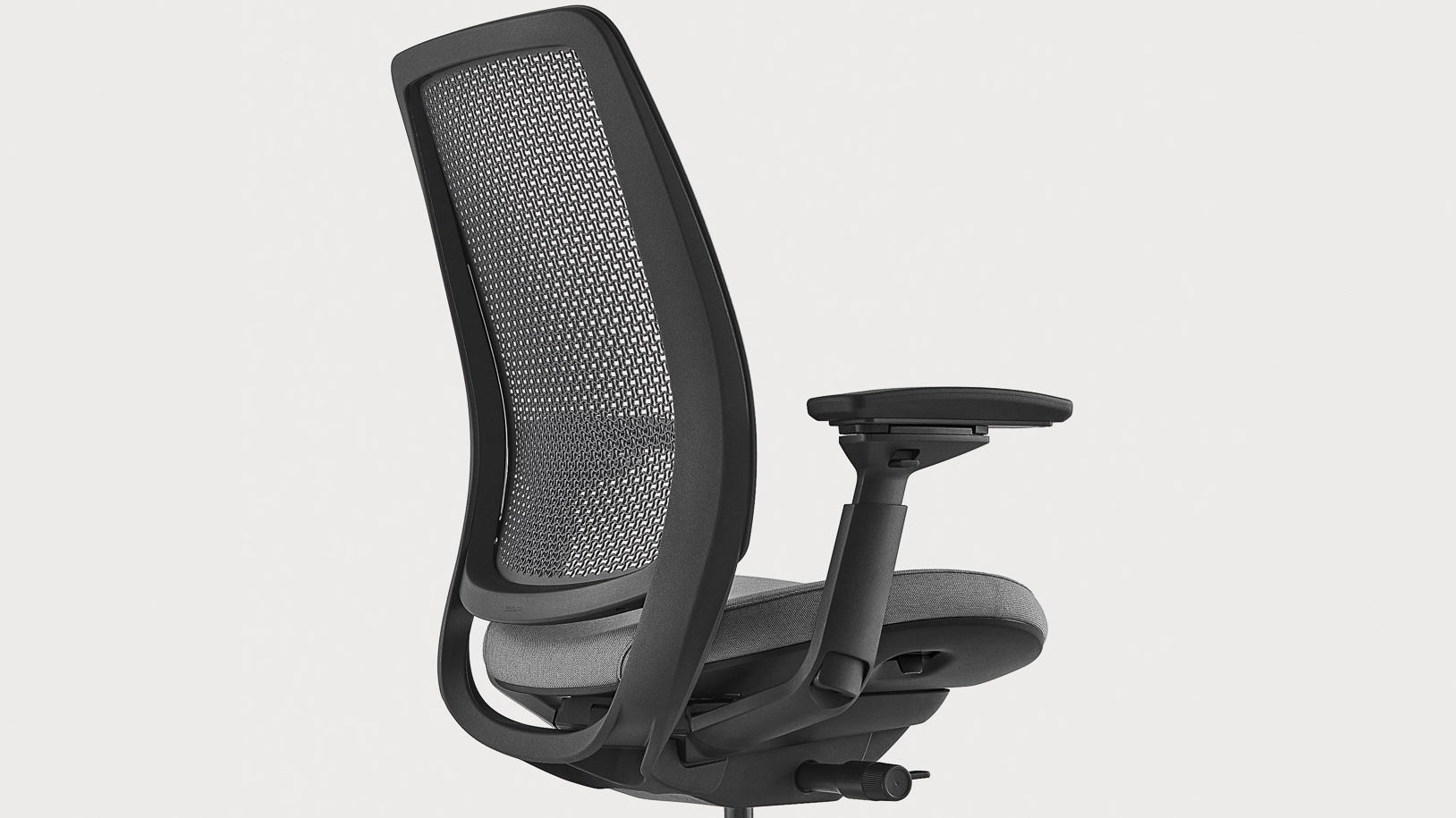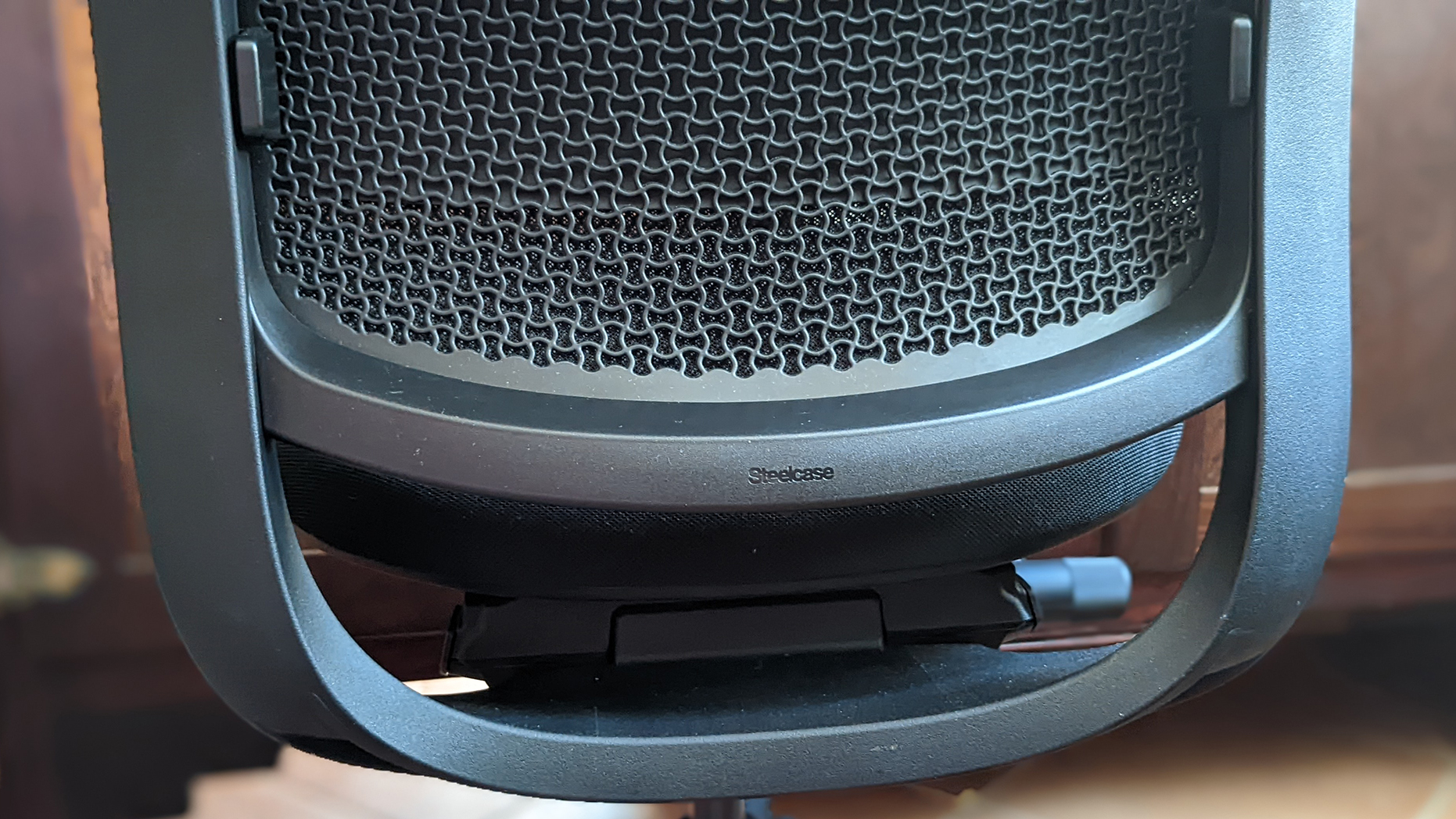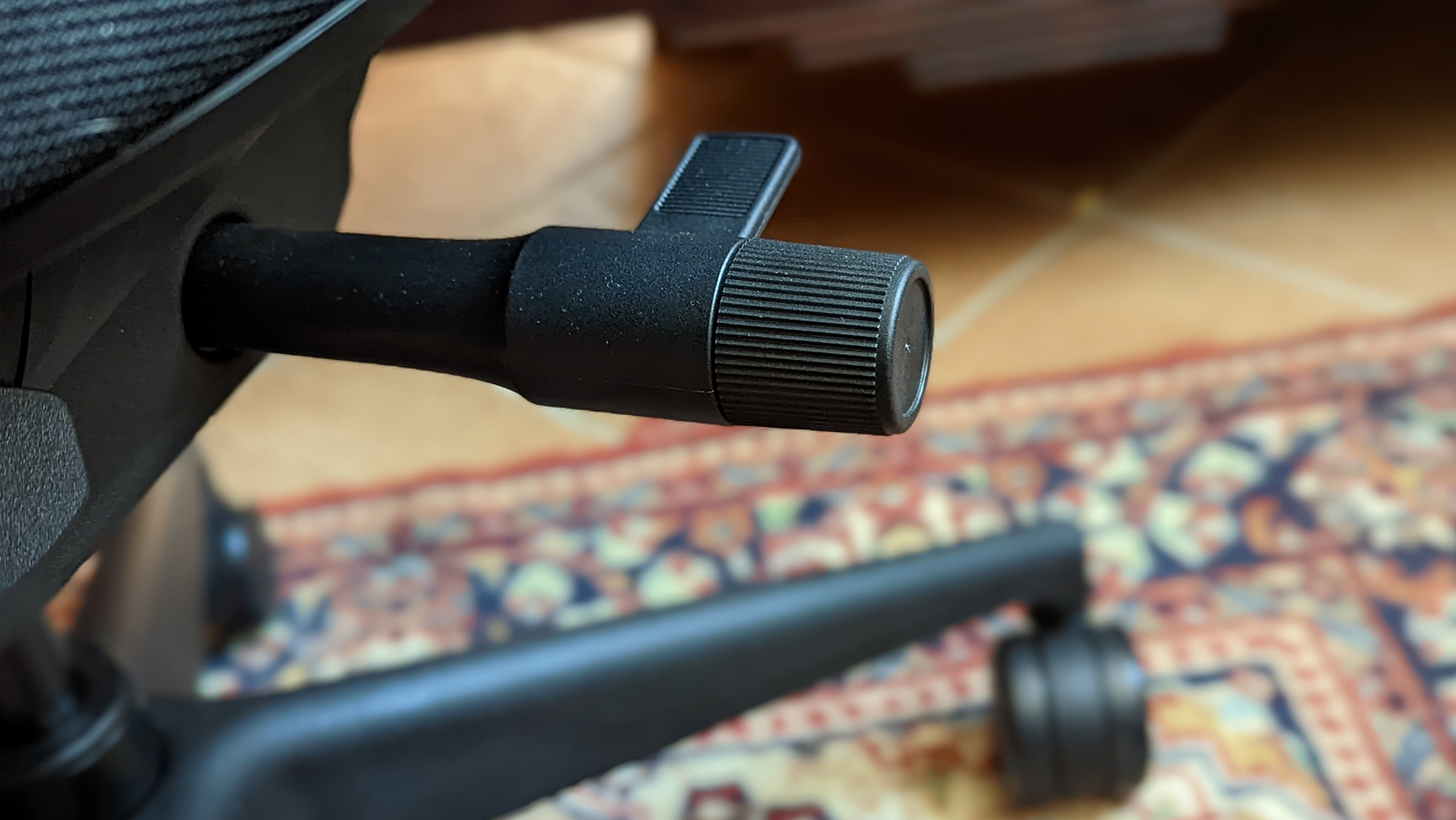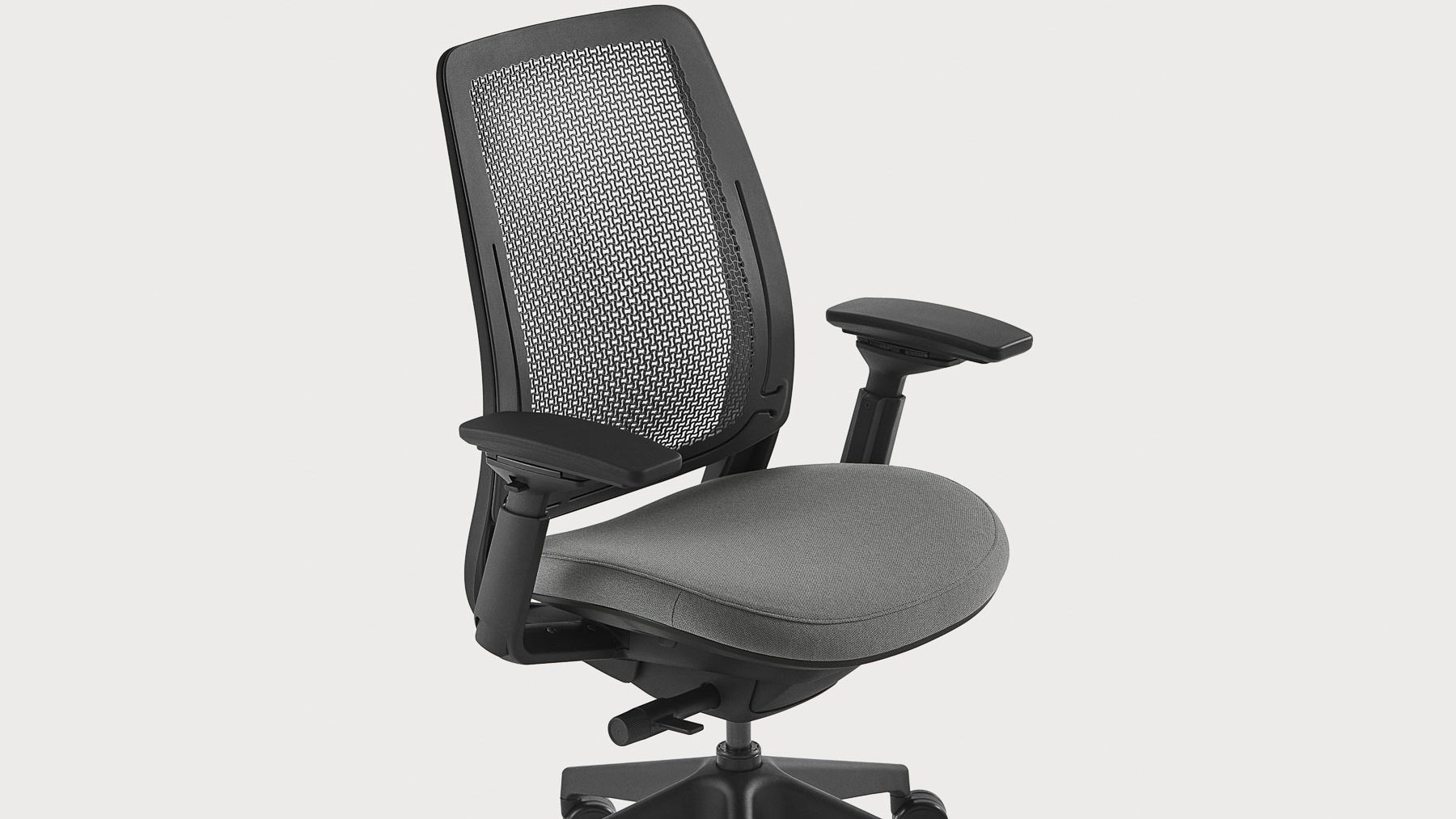TechRadar Verdict
With its vast array of customizable options and the ability to span from compact task chair to deluxe ergonomic throne, the Series 2 offers something for everyone without hitting the dizzying prices of the category heavyweights. While there’s no option to lock the chair’s back at any reclining angle, we were thoroughly impressed by the comfort delivered from the upright position and with its other tweakable settings.
Pros
- +
Vastly customizable
- +
Affordable for an ergonomic chair
- +
Comfortable and breathable
Cons
- -
Limited recline options
Why you can trust TechRadar
The ergonomic chair market is more relevant now than ever, with plenty of us working from home or at the very least, finding ourselves sedentary for large stretches of time. While there are a few affordable options in the office and gaming chair categories, most of the best office chairs for ergonomics attract a hefty premium.
The Steelcase Series 2 is one of the more affordable chairs in this category, and thanks to its immense customizability, you don’t need to fork out extra for optional extras you don’t want or need.
The model we reviewed was the task chair configuration (rather than the stool) and had no armrests or headrests, making it the most compact possible configuration on offer. It came fitted with Steelcase’s 3D Microknit backing, adjustable lumbar support and soft castors that are suitable for hard surfaces. But how does it stack up against some of the best office chairs on the market?

Steelcase Series 2 pricing and availability
The Steelcase Series 2 is somewhat of a shapeshifter, with a variety of configurations (and prices) available in the US, UK, and Australia, with each region having access to a different set of options.
In the US, pricing starts at $463 but this almost doubles to $914 when including all of the optional extras – armrests, headrest, lumbar support, hard-floor wheels, a 3D Microknit back and the elevated stool configuration all cost extra.
For the UK, Steelcase doesn’t currently offer a direct-to-consumer model, so the pricing will fluctuate depending on the retailer that stocks the Series 2. With that said, you can expect to pay in the realm of £450 to £800, depending on which configuration you end up with and where you shop.
In Australia, the options are far less sprawling, with prices starting at AU$718 for the chair sans headrest and armrests, with these optional additions costing AU$177 and AU$60 extra respectively (making it AU$955 total for the maxed-out configuration). All Australian models come with the lumbar support and 3D Microknit back by default, as well as the soft wheel castors for hard floors.
Sign up to the TechRadar Pro newsletter to get all the top news, opinion, features and guidance your business needs to succeed!
All things considered, the Series 2 cost places it toward the lower end of the ergonomic chair market – it’s a good deal more affordable than the likes of the Humanscale Freedom and its other high-end ergonomic ilk, but will cost you more than most products from Ikea or other multi-faceted furniture brands that creep into the category.
Design and build quality
The Series 2 is an elegant and understated looking chair – almost timeless aside from the slightly modern aesthetic introduced by its curving back support structure and geometric Microknit backing behind that. It’s available globally in black, or (dependent on region) in a variety of subdued pastel tones and shades.
The chair’s appearance will obviously vary a good deal depending on some of the options you choose (the elevated stool configuration chief among them), but in our review configuration, the look is minimal and compact, taking up much less space in all directions than many other chairs in the category.
The build quality overall feels incredibly solid, with a combination of steel and hard plastic comprising most of its structural elements. There’s a small amount of give between the base and the seat when rocking the chair side-to-side or back-and-forth, but this does nothing to discourage our trust in its integrity.

Some of the plastic trim beneath the seat wobbles a little, but this is merely a cover to hide the ‘armless’ aspect of this configuration and isn’t integral to the chair’s stability. The curving singular frame that encompasses and supports the back feels incredibly solid and we, again, have no doubt of its reliability.
The wheelbase features five arms with double-sided, swivelling castors at their end, and despite its relatively small footprint, it feels incredibly stable with no threat of tipping, even when fully reclining the back. The castors, as we’ve mentioned, are the ‘soft’ variety that’s designed not to harm wooden floors, and we found them to glide smoothly in all directions on the (relatively uneven) tiled floor we reviewed it on.
The Series 2 features two levels of resistance for the back’s reclination (one more firm than the other) as well as a fixed position that locks it in place upright. Perhaps it was a result of this author’s terrible posture or larger mass, but neither of these two resistance options were enough to support even close to an upright seated position, with the back only stopping at rest halfway through its travel on the firmer setting.
The chair also doesn’t feature any way to lock a reclined position in place, so we found ourselves using it in its upright setting permanently. As comfortable as the chair is in its default vertical position, we would have loved to see the ability to lock the back at an angle, even if it were just a few midway positions that were available.

The adjustment controls are simple, intuitive and easy to access while seated. The lever beneath the chair (on the right-hand side when seated) has a paddle that elevates or lowers the chair height, while a twist control (dubbed the ‘comfort dial’) on the lever’s end flicks between the three recline settings.
A small pull tab under the chair, near the lever, allows you to adjust the seat itself about 7cm backwards or forwards, away from the backrest. The adjustable lumbar support has a pair of similar tabs on the rear of the backrest that allow you to raise or lower it for optimal positioning.
While they weren’t included in our review model, the armrests can either be adjusted vertically or in four dimensions (height, width, pivot and depth) depending on the model, and the headrest is able to be shifted about 8cm up or down.
Comfort
If there’s one thing you’d expect from an ergonomic chair, it’s comfort, and thankfully the Series 2 ticks this box rather well for the most part. Its combination of adjustments and sensible material choices make it ideal for longer seating sessions, and the extra options such as armrests and headrests work to enhance this.
If you’re in a warmer climate (we reviewed this chair during an Australian summer) the mesh fabric on the back is a lifesaver. Compared to the leather options typically found in gaming chairs and some office chairs – or even solid fabric backing for that matter – the breathable mesh reduces back sweat massively and allows you to sit longer as a result.
Breathability isn’t the only role the mesh performs – Steelcase refers to its combination of a fabric mesh with 3D Microknit plastic support behind it as LiveBack technology, which flexes organically to accommodate the user’s spine.
We found this claim to be remarkably true. It hits the Goldilocks zone of reinforcing rigidity and soft cushioning really well, offering just enough give to mold to your back while still supporting your upright posture. Ultimately, we found the back to be as close to ‘disappearing’ as possible, which is definitely a boon for longer sitting sessions.
One of the major (and only) drawbacks of the Series 2 in terms of comfort, which we’ve already hinted at, is its lack of useful reclining options. While the two resistance settings for leaning back may suit some – the firmer of the two options may support those with a slighter build, for instance – we found there to be very little usable midpoint between fully reclined and fixed upright in practice.
With this said, if you’re looking for a chair purely for its vertical support, this shouldn’t apply to you, but it may be worth considering that even having the option for reclining has likely bumped the overall price up somewhat.

The seat base is an upholstered fabric with ample cushioning, which we found incredibly comfortable. It’s somewhat scooped at the centre and is wider at the knee-end than towards the back, fitting our form well and encouraging the correct forward orientation of our legs.
With the ability to shift the seat base forward and back, it’s easy to find the right extension position to support both your legs and your spine. Once you tweak this alongside the adjustable lumbar support, you’ll soon find the resulting comfort transformative.
We played around with these two settings in conjunction over the course of a few days and are glad we took the time to do so. It brought the chair to life and we don’t expect to be altering these settings again any time soon.

Final verdict
For those seeking an ergonomic chair at the more affordable end of the spectrum the Steelcase Series 2 offers great value overall. For the most part, all of the customizability options (especially in the US) mean you won’t pay for extras you don’t want or need and allows the chair to fill the role of, compact task chair, ultra-adjustable ergonomic throne and anything between.
The mesh backing material is both comfortable for its support and its breathability makes it a great alternative to leather chairs in warmer climates. The chair is considerably more understated in appearance than most gaming options, and doesn’t have quite the utilitarian-meets-sci-fi aesthetic of the more expensive ergonomic competitors.
If you’re looking to lock the chair back at any angle other than vertical, this isn’t for you, but if you’ll be using it predominantly in its upright position and want the option to lean back occasionally, this complaint is moot and the chair is splendidly comfortable.

